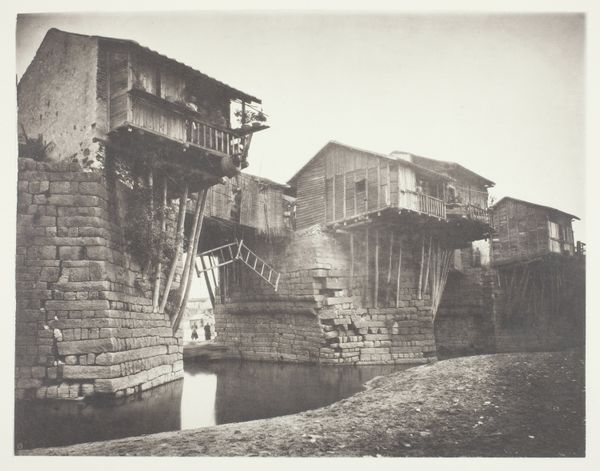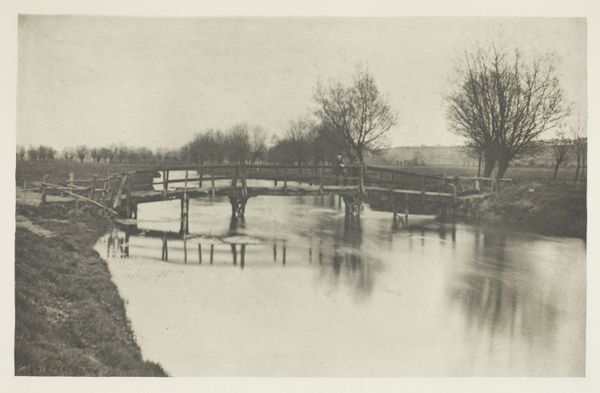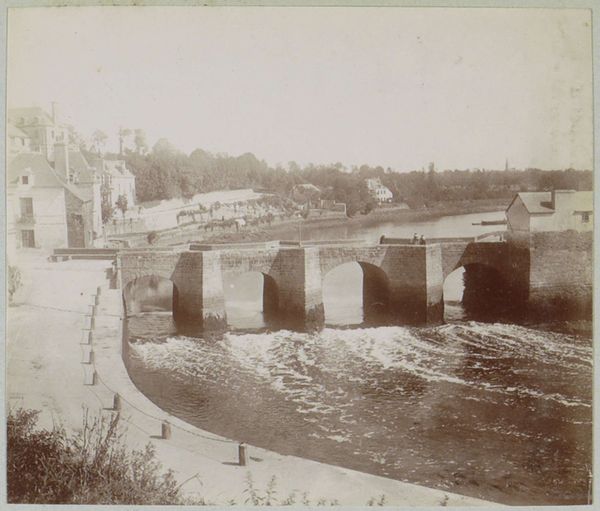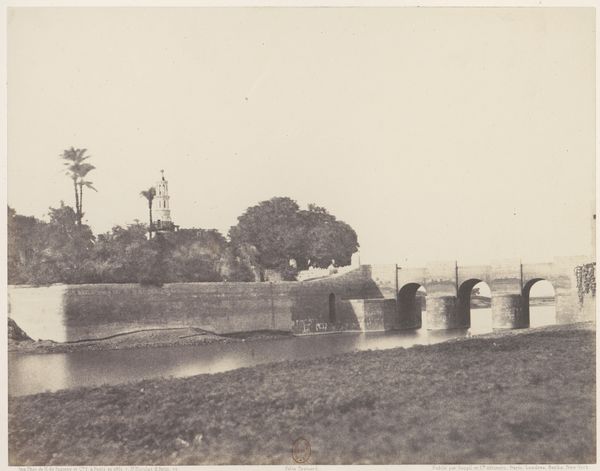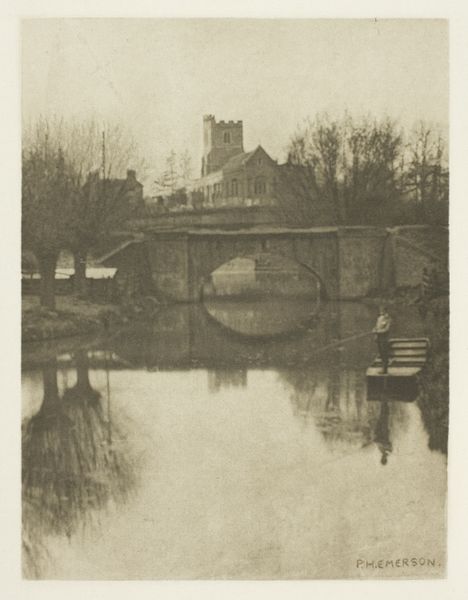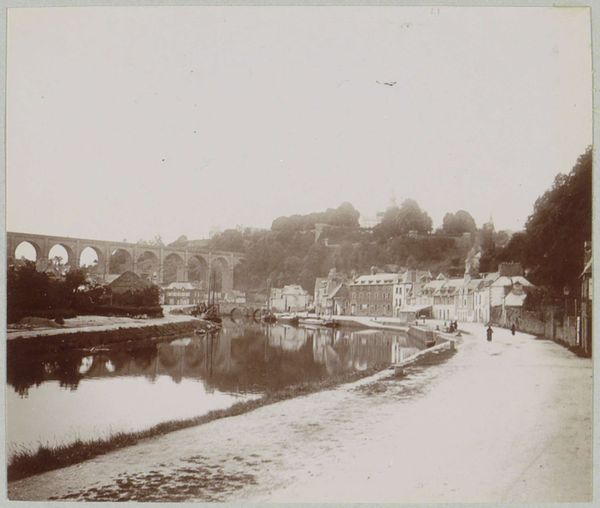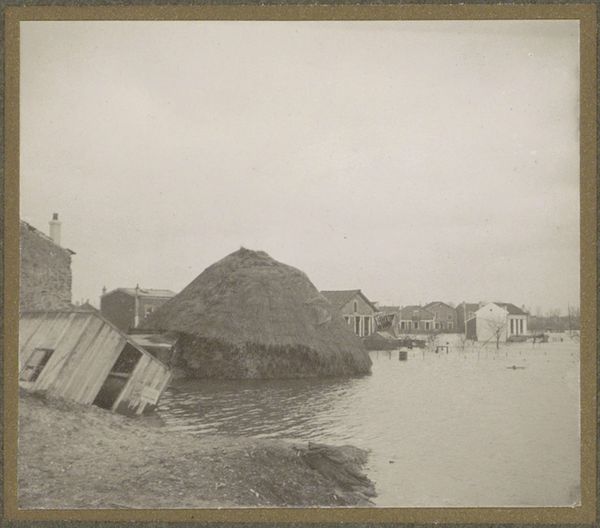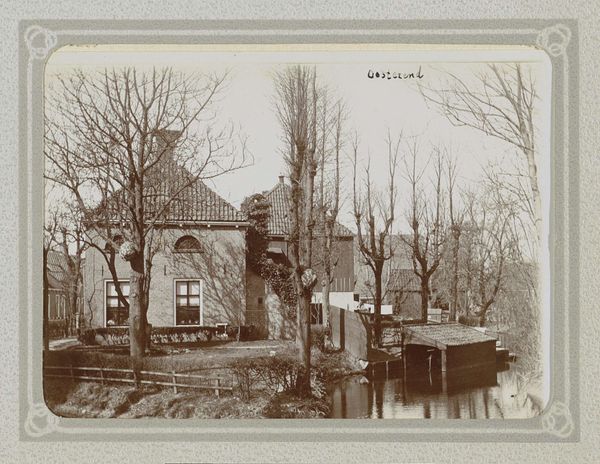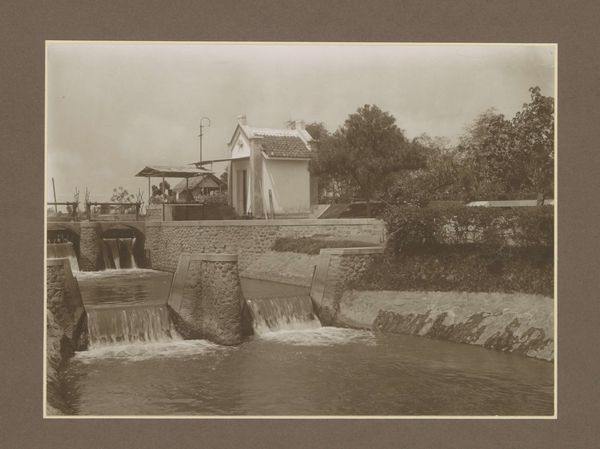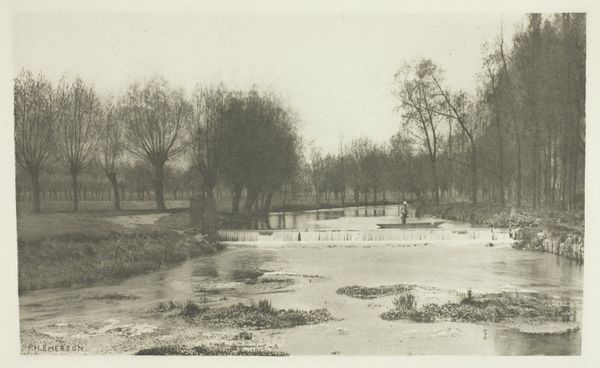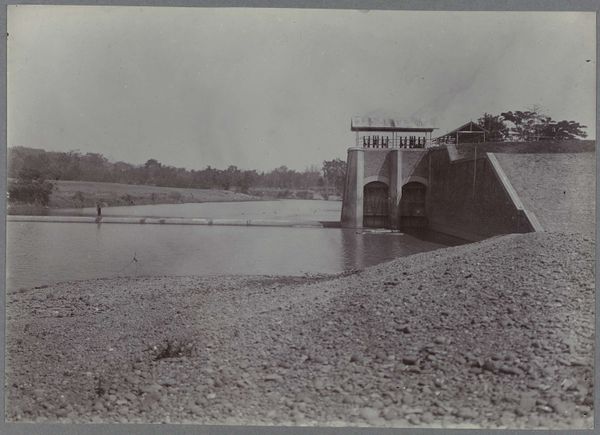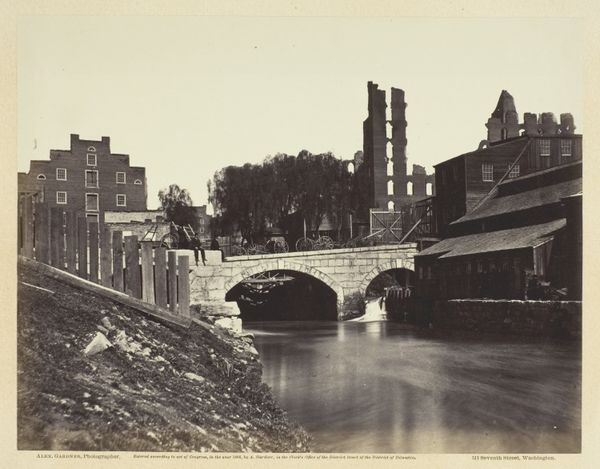![[Canal and Ruins of Richmond and Danville Railroad Depot, Richmond, Virginia] by Alexander Gardner](/_next/image?url=https%3A%2F%2Fd2w8kbdekdi1gv.cloudfront.net%2FeyJidWNrZXQiOiAiYXJ0ZXJhLWltYWdlcy1idWNrZXQiLCAia2V5IjogImFydHdvcmtzLzkzNjhlMTBkLTJmMTgtNDc5My1hNDExLWM2NTI0MTViZmYyNS85MzY4ZTEwZC0yZjE4LTQ3OTMtYTQxMS1jNjUyNDE1YmZmMjVfZnVsbC5qcGciLCAiZWRpdHMiOiB7InJlc2l6ZSI6IHsid2lkdGgiOiAxOTIwLCAiaGVpZ2h0IjogMTkyMCwgImZpdCI6ICJpbnNpZGUifX19&w=3840&q=75)
[Canal and Ruins of Richmond and Danville Railroad Depot, Richmond, Virginia] 1865
0:00
0:00
photography, gelatin-silver-print
#
war
#
landscape
#
outdoor photograph
#
photography
#
gelatin-silver-print
#
monochrome photography
#
history-painting
#
monochrome
Dimensions: 15.8 x 21 cm (6 1/4 x 8 1/4 in. )
Copyright: Public Domain
Curator: Standing before us is an evocative gelatin silver print from 1865 titled "[Canal and Ruins of Richmond and Danville Railroad Depot, Richmond, Virginia]" by Alexander Gardner. What are your immediate thoughts, Editor? Editor: Bleak, utterly bleak. It's a landscape, but there's zero serenity. Just devastation mirrored in that still water. The bridge looks like a toothless grin over a gaping wound. It’s oppressive, really. Curator: The imagery certainly reflects the desolation in Richmond at the close of the Civil War. Water, often a symbol of renewal, here reflects destruction. The arches and canal structure hint at Roman aqueducts and classical ideals, now crumbled—a shattered empire of sorts. Notice also the small figures atop the remaining wall on the left side of the frame. Editor: Ah, the survivors, perched on the edge of oblivion! There's a haunting ambiguity; are they contemplating despair or the possibilities of rebuilding? It looks incredibly heavy, visually... emotionally... heavy. The use of monochrome further drives home that stripped-bare feeling. Curator: Indeed. Monochrome here serves not just as a stylistic choice, but almost as a stark truth-teller, lacking the seductive allure of color. Alexander Gardner frequently photographed scenes of the American Civil War. This photograph uses the trope of the ruin to stand as an allegory to the ephemeral nature of human constructs against nature’s forces. Editor: Right. We think we're building these solid structures, physical and societal, and BAM, nature, or in this case, war, shows who’s really boss. The reflection in the canal doubles the sadness... the reality that these places are destined to be lost echoes through time... It gives you the chills, really. Curator: Consider how the gelatin silver print method impacts our reading; its chemical creation echoes the destructive chemistry of the war itself. Perhaps the picture symbolizes that from ruins new icons can emerge, new societal mythologies form. Editor: Well, it definitely feels like a monument to loss... to the hubris of thinking anything lasts forever. Though seeing that broken yet persisting architecture tells its own defiant story as well... a kind of tragic beauty... Curator: It is a potent piece; indeed the photograph reminds us of the layers of history carried within seemingly simple scenes. Editor: Absolutely. A silence so loud it screams, a dark pool reflecting a ghost. Gardner captured more than ruins, it seems.
Comments
No comments
Be the first to comment and join the conversation on the ultimate creative platform.
